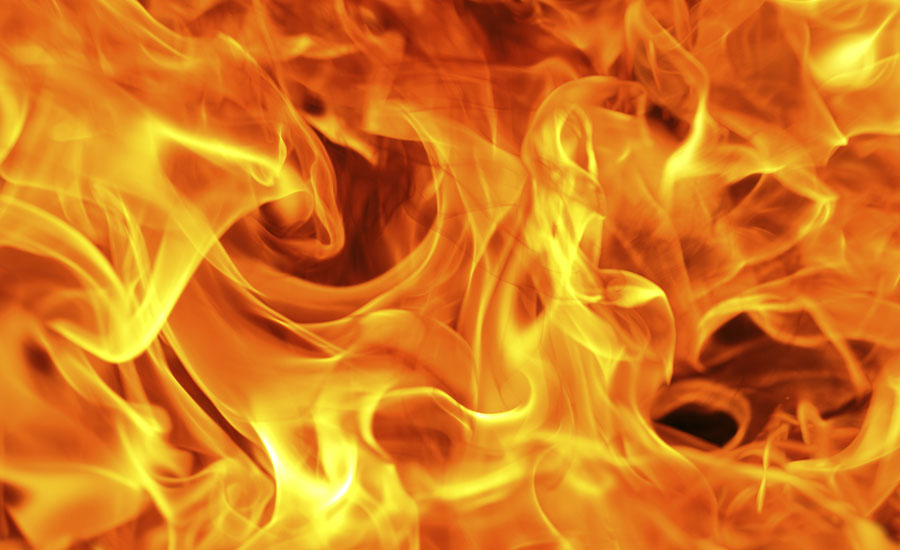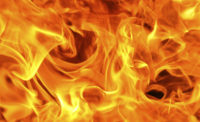By CDR Christa Hale, LCDR Corey Butler, and Elizabeth Dalsey, M.A.
Wildland fire fighters are required to pass an “arduous duty” physical fitness test annually to help ensure that they are prepared for the physical nature of the job. Unlike structural fire fighting, wildland fire fighting often requires long work shifts that may last up to 14 continuous days, and often takes place in environments that are challenging with regard to temperature and terrain. Because of this difference, researchers cannot assume that study findings among structural fire fighters would apply to wildland fire fighters. Because wildland fire fighter-specific fatality data are often sparse or combined with information on all U.S. fire fighter deaths, NIOSH researchers had trouble answering our partners’ most basic on-duty fatality questions such as:
- What injuries are killing wildland fire fighters on the job?
- How many wildland fire fighters are dying from cardiac events on the job?
- Why do different agencies report different numbers of fatalities per year? and
- What can we do to prevent on-duty deaths?
These types of questions led the NIOSH Wildland Fire Program to create a surveillance system to track wildland fire fighter fatalities in the U.S., which proved to be an “arduous duty” of its own.
Creating the NIOSH Wildland Fire Fighter On-Duty Death Surveillance System
To develop NIOSH’s Wildland Fire Fighter On-Duty Death Surveillance System, our researchers identified three data sources that track on-duty wildland fire fighter fatalities and provide the types of data needed for this occupational health surveillance effort:
- The National Fire Protection Association (NFPA) Fire Incident Data Organization,
- The National Wildland Fire Coordinating Group (NWCG) Safety Gram, and
- The United States Fire Administration (USFA) fire fighter fatality data system.
So, why didn’t we just use one of these sources if they all track wildland fire fighter fatalities? Each of the three data sources has different criteria for inclusion in their system and thus, does not necessarily identify all wildland fire fighter fatalities. Even though it seemed like they were tracking the same thing, they were including cases based on slightly different criteria, making it difficult to know the true number of fatalities. To overcome this limitation, we determine which cases are included in our system by using a consistent case definition. Case definitions contain uniform sets of criteria about the events to be included in the system, so that each person applying the definition to a case can classify it correctly and make a consistent decision about including it or not. By consistently applying a case definition, we feel more confident that the number of fatalities that happen in one year is comparable to the next year because we are counting the same thing.
The process for developing this surveillance system and keeping it up to date by using three data sources can be challenging and time consuming for several reasons. First, the data sources do not collect the same level of detail. For example, USFA collects up to 233 pieces of information for each fatality while NWCG collects nine. Second, the data are released at different intervals as some data sources report in almost real-time while others do not report until several years after the event. Finally, for some cases reported in multiple data sources, information such as the exact date or locations of death differs making it difficult to match up cases between data sources. Thus, to confirm cases and ensure the information collected is accurate, we have to reach out to the agencies that collected the data as well as other sources to determine whether a reported fatality was truly unique or actually contained within more than one data source.
For our surveillance system, we applied the following case definition, which we ultimately recommended as a common case definition for on-duty wildland fire fighter fatalities1:
- Any fatal injury or illness (e.g. sudden cardiac or cerebrovascular event) sustained among wildland fire fighters while on-duty at a wildland fire-related event or while performing wildland fire duties in the U.S.
- “Wildland fire” refers to a non-structure fire occurring in vegetation or natural fuels and includes prescribed fire and wildfire.
- ‘Wildland fire fighter’ refers to a person whose principal function is fire suppression (includes paid/career and volunteer workers).



